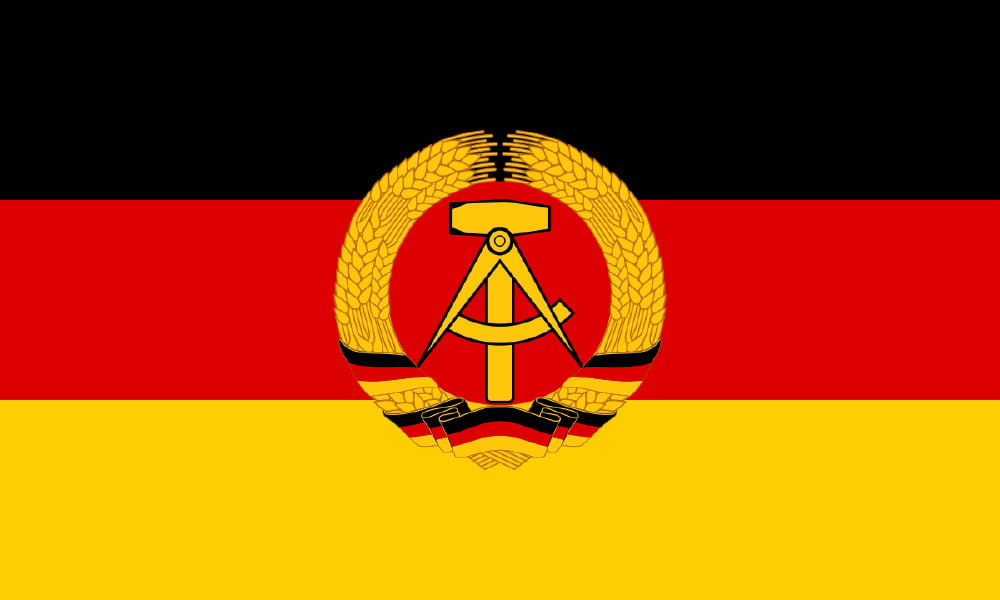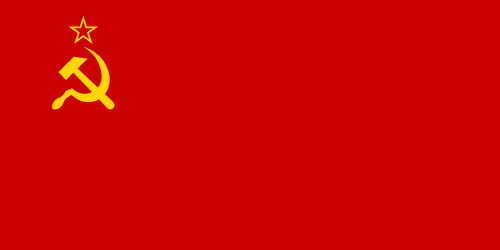| National Factbook |
| Flag: |

|
| Nation Name: |
Eastern Socialist Germany |
| Leader Name: |
Johann Kraus |
| Currency: |

Euro |
| National Animal: |

Golden eagle |
| History: |
Following the end of World War II and the division of Germany, the eastern territories fell under Soviet influence. In 1949, while the Federal Republic of Germany (West Germany) was formed under Western Allies, a separate and ideologically distinct nation emerged: Eastern Socialist Germany (ESG).
Built on Marxist-Leninist principles, ESG was formally founded as a people’s republic governed by the Unified Socialist Party of Germany (USP). Under Soviet guidance, ESG established a centralized command economy and a highly militarized state. The first leader, General Secretary Erich Mertsch, was a former resistance fighter turned revolutionary figure who aligned ESG closely with Moscow.
The early years were marked by brutal suppression of opposition, rapid nationalization of industry, and the creation of a vast internal security network—the State Protection Service (StaatsSchutz), modeled after the KGB and Stasi. |
| Geography |
| Continent: |
Europe |
| Land Area: |
3,487.44 sq. km |
| Terrain: |
1. The Berlin Core (Central Region)
Urbanized and heavily fortified, Berlin is the political and administrative heart of ESG. It serves as the capital and ideological center.
The city is surrounded by a defensive ring of socialist urban planning—broad boulevards, government complexes, worker housing blocs, and public squares designed for mass rallies and surveillance efficiency.
The underground infrastructure is extensive, with bunkers, tunnels, and metro systems serving both civilian and military use.
2. Brandenburg Plains (Western and Southern Zones)
A flat, low-lying landscape dominated by forests, lakes, and farmland, ideal for mechanized military maneuvers.
These open spaces host military training grounds, airbases, and missile installations camouflaged as agricultural cooperatives.
Strategic rail lines radiate from Berlin, reinforcing the capital’s logistical dominance over the region.
3. Spreewald and Forested Wetlands (Southeast)
The Spreewald is a dense, marshy forest zone crisscrossed by small canals and rivers.
Used historically by partisans during anti-fascist struggles, it has symbolic importance and now houses elite ESG special forces training camps.
The area is protected for its biodiversity and serves propaganda purposes as an example of ESG's environmental stewardship.
4. Northern Lake District (Mecklenburg Region)
A glacially carved region of lakes, low hills, and pine forests, providing ESG with fresh water, fisheries, and natural beauty.
During wartime, the lakes serve as natural barriers and are integrated into the country’s defense-through-ecology doctrine, with submerged sensor nets and amphibious defenses.
Several “people’s resorts” dot the shoreline, providing controlled leisure for the working class.
5. Oder River Borderlands (East)
The Oder River forms a natural boundary with Poland and is heavily militarized.
This area features floodplains, riverine forests, and key border crossings guarded by reinforced checkpoints, watchtowers, and drone surveillance.
The region hosts the ESG’s Eastern Defense Line, a mix of modern bunkers and Cold War-era relics refurbished for current use. |
| Highest Peak: |
🏔️ Mount Stahlzahn ("Steel Tooth"),
1,360 meters
|
| Lowest Valley: |
Gracemeria Valley,
-822 meters
|
| Climate: |
ESG experiences a temperate continental climate, with:
Cold, snowy winters that reinforce national stoicism and emergency preparedness exercises.
Mild to warm summers, used for large-scale agricultural production and public labor mobilization programs.
Seasonal fog and low cloud cover, especially near lakes and wetlands, which ESG’s military uses for stealth training. |
| People & Society |
| Population: |
291,504 people |
| Demonym: |
German |
| Demonym Plural: |
Germans |
| Ethnic Groups: |
Aryian - 100.0%
Caucasian - 100.0%
European - 100.0% |
| Languages: |
German - 80.0%
English - 10.0%
Russian - 10.0% |
| Religions: |
Christianity - 100.0%
Stalinism - 100.0%
Atheism - 0.0% |
| Health |
| Life Expectancy: |
110 years |
| Obesity: |
15% |
| Alcohol Users: |
83% |
| Tobacco Users: |
67% |
| Cannabis Users: |
0% |
| Hard Drug Users: |
0% |
| Economy |
| Description: |
ESG operates a planned socialist economy with modern reforms. Since the Socialist Renewal of the 1990s, it blends centralized state ownership with a controlled cooperative sector and limited market mechanisms.
Core Model:
Strategic sectors (energy, defense, heavy industry, transport) are state-run.
Agriculture, small-scale manufacturing, and services are often run by worker cooperatives under state guidelines.
No private property of production—only state or collective ownership. |
| Average Yearly Income: |
$62.34 |
| Gross Domestic Product (GDP): |
$376,880,836.00 |
| GDP per Capita: |
$1,292.88 |
| Gross National Income (GNI): |
$186,947,525.00 |
| Industries: |
🛠️ 1. Heavy Industry & Defense Manufacturing
ESG’s industrial base is centered around Berlin, Magdeburg, and Cottbus.
Produces tanks, soldiers, aircraft, and naval vessels for ESG and allied nations.
The Ministry of People’s Industry oversees all production quotas and exports.
Flagship enterprise: VEB Stahlwerke Rotbanner – a massive complex producing armored vehicles and tracked systems.
⚡ 2. Energy
ESG is largely energy independent:
Lignite (brown coal) mined in Lusatia (southeast).
Nuclear power from state-run plants near the Oder River.
Wind and solar cooperatives subsidized under eco-socialist directives.
Strategic focus on energy security and autonomy.
🌾 3. Agriculture
Operates under collectivized and mechanized state farms (called Landwirtschaftliche Produktionsgenossenschaften, LPGs).
Primary products: grains, potatoes, pork, and dairy.
Surpluses are traded with friendly nations (e.g., Cuba, Belarus, Vietnam) in exchange for fuel or tech.
💻 4. Cybertechnology and Communications
In the 2010s, ESG invested heavily in a state-controlled cybernetics and AI sector for surveillance, logistics, and defense.
The People’s Institute for Algorithmic Planning creates centralized economic forecasts and decision models.
🏗️ 5. Construction and Infrastructure
Large-scale housing, transport, and industrial construction is run by state brigades and youth labor programs.
Rail and road networks are robust, militarized, and link every major town to Berlin.
ESG exports prefab construction methods to socialist allies. |
| Military |
| History: |
Core Identity and Doctrine
ESG fields a small but hyper-lethal standing military, rooted in the belief that aggression is defense, and that preemptive strikes deter larger adversaries.
Your military is offense-based, embracing:
Lightning raids
Deep penetration tactics
Cyber-disruption strikes
Forward sabotage
This force is trained not to hold ground, but to cripple infrastructure, disable command chains, and force chaos behind enemy lines — long before a full-scale war can begin. |
| Soldiers: |
11,969 |
| Tanks: |
91 |
| Aircraft: |
26 |
| Ships: |
6 |
| Missiles: |
0 |
| Nuclear Weapons: |
0 |
| Last Updated: 06/11/2025 09:56 pm |














